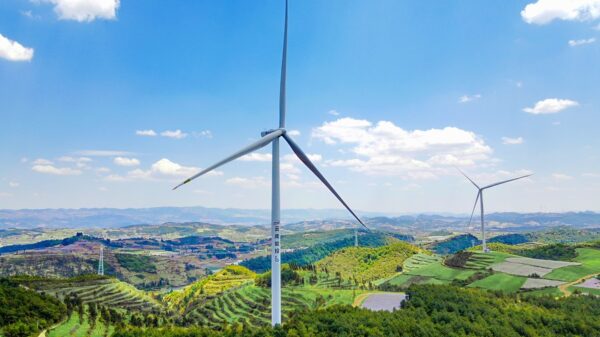A handful of Chinese supervisors at the Huajian factory watch hundreds of Ethiopian workers trim leather, glue soles and lace up boots in the Eastern Industry Zone in Dukem, 30 kilometres (20 miles) south of the Ethiopian capital.
It marks a shift in China’s traditional investments in Africa, which mainly involve heavy infrastructure development and oil production, while for Ethiopia it offers an alternative to export of unprocessed raw materials.
“The two sides have a commitment, they say ‘you should have something, I should get something,’” said Qian Guoqing, the deputy director of the Eastern Industry Zone.
Huajian, one of China’s biggest shoe manufacturers, plans to invest up to $2 billion (1.5 billion euros) in Ethiopia to make shoes for export to Europe and North America.
Construction of the industrial park started in 2009, and rows of three-storey green and yellow buildings now stand on a patch of the expansive land. The government says it plans to build five more industrial zones throughout the country to attract further foreign investment.
When completed in 2014, the $250 million project will host over 80 factories and create 20,000 local jobs. Currently six Chinese-run factories operate in the zone, including a car assembly plant and a plastics factory.
However, analysts say large-scale investment in Ethiopia has risks and its financial benefits are still uncertain.
“It’s not a risk-free strategy and it’s not necessarily clear that it will work,” said Stefan Dercon, development economist at Oxford University.
“The Chinese… take the opportunities now in Ethiopia where they make the trade-off between very high rewards. That’s pretty risky in the first few years of doing this, and we’ll have to wait and see.”
To minimise risks and attract investors, the Ethiopian government is offering four-year tax breaks, cheap land and free electricity to investors in the industrial zone.
But challenges abound: foreigners complain of poor telecommunications, overbearing bureaucracy and the absence of a port in the landlocked Horn of Africa country.
Cultural differences, the language barrier and a poor work ethic among the locals also pose hurdles, said Paul Lu, Huajian’s human resource manager, but noted that the availability of labour and raw materials were key attractions.
“We came to make shoes and we had to consider the resources – Ethiopia is very rich in leather,” said Paul at the factory’s entrance, where about two dozen people were waiting for job interviews.
Attracting foreign investment is part of Ethiopia’s lofty “Growth and Transformation Plan,” which aims to boost economic growth and transform it into a middle-income country by 2025.
Dercon however voiced concern that Ethiopia might be moving too fast and the plan could backfire, scaring off investors and creating financial chaos.
“Arguably, they’re trying to run before they can walk,” he said.
Ethiopia will need to sustain high growth rates in order to pay off the start-up investment, such as in infrastructure and electricity, argued Dercon.
“The risk is that they may not get another chance. If this doesn’t work, the sentiment will go down very quickly, so the next two or three years are crucial for this whole process.”
But State Minister for Industry, Tadesse Haile, insisted that a quick pace was needed for development.
“We have to move fast, we have a very critical enemy, our enemy is poverty,” Tadesse said. “Anybody who would ask us to slow down means to go along with poverty.”
With annual economic output of $325 per person, according to the United Nations, Ethiopia is one of the poorest African countries and among the top aid recipients. Tadesse argued that investment will help reverse the status.
“It generates growth, it employs… and also you can produce products that can be exported, generate foreign currency and technology transfer,” he said.
While the investment plans appear attractive, some workers at Huajian complain of low salaries.
“The salary is not enough,” said Teju Edek, 22, a quality controller at Huajian earning $30 a month. But he admitted he is learning valuable skills at the factory.
“We are here because want to develop our knowledge of technology,” he said, adding that he could earn more at some Ethiopian-run factories, but would not pick up the same expertise.
For Tafere Getie, a manager at the industrial zone, the investments will be more beneficial when management and ownership are eventually transferred to Ethiopian hands.
“I wish that the Ethiopians who are working in foreign industries now will have their own industries in 20 years.”



































